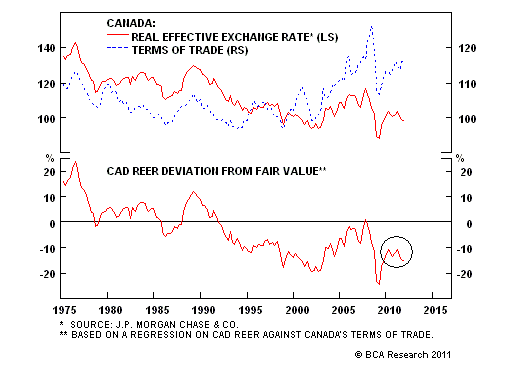Is The Canadian Dollar Really A Commodity Currency
Post on: 15 Апрель, 2015 No Comment

With the recent development of the Athabasca Oil Sands in Alberta, awareness of the importance of Canada as an oil producer increased. The recent rejection by the Obama Administration of the proposed Keystone pipeline, which would have transported about 900,000 barrels of oil per day to the U.S. Gulf refiners, served to enhance the public’s knowledge of Canada’s growing importance as an oil producer.
After the Keystone pipeline was rejected by the Obama Administration, Prime Minister Harper organized and is currently leading a delegation to China. A Northern Gateway pipeline which would transport crude to British Columbia, and subsequently to China is being discussed.
In addition to Canada’s booming energy sector, the mammoth country has long been a supplier of natural resources. Grain, lumber, gold, silver, and nickel are among the many commodities mined or produced in Canada.
It is no wonder then, the loonie is regarded as a commodity currency, but Canada is a diversified economy, and this perception is not entirely correct. In Ontario, Canada’s most populace providence, more automobiles were produced there, for the past two years, than in Michigan.
Close to Detroit, the Big Three U.S. auto makers were attracted to Canada, in part due to the cheaper Canadian currency. For decades this arrangement was profitable for the auto industry, but now the times are changing.
An article by Greg Keenan in the Globe and Mail describes some of the problems:
Just as the auto industry recovery kicks into a higher gear in Ontario, billions of dollars in new investment in southern North America and a shift to smaller vehicles are threatening the long-term health of the province’s key economic engine.
Auto makers produced more vehicles in Ontario than they did in Michigan again last year, but these trends are alarming in what auto makers say is now the highest-cost country in the world to make cars and trucks.
So we have high labor costs, about $32/hour, building fuel inefficient cars, with anticipated record high gasoline costs, not a pretty picture for the Canadian auto industry.
Auto production has been moving to the south of the U.S. and Mexico. In Mexico, it is estimated labor cost are about 1/6th of those in Canada. Auto production has been steadily growing in Mexico, now reported to be about 20% of total North American production. Two new Japanese plants are scheduled to be completed there in the next two years.
Once one of the leaders in the Canadian economy, Ontario, has become the laggard. In fact the Federal Canadian government is now making equalization payments to Ontario, a scheme to subsidize those areas less able to pay their way.
The auto industry is very important as evidenced by the government taking a small percentage of Chrysler during the recent bailout, but there are other manufacturing companies leaving Canada for cheaper labor markets. Indeed, the Canadian economy is diverse, not merely a commodity country. The Loonie, now trading at a small premium to the USD, may encounter difficulty moving products to the U.S.
The recent strength in the C$ may not be because of it’s own merits, but rather USD weakness. Remember a huge USD had been accumulated during the latter part of 2011, a response to the fear of a European credit crises in late 2011. The ECB’s generous offer, 490B to banks at 1% for three years quelled that crises, and their intent to pump as many euros into the system as needed still exists.
The Greek saga continues with always the promise of a settlement coming shortly. Regardless of the outcome of this drama, we feel the C$, as we mentioned in our recent article, will once again trade at a discount to the USD.
(Click to enlarge)
Disclosure: I have no positions in any stocks mentioned, and no plans to initiate any positions within the next 72 hours.














